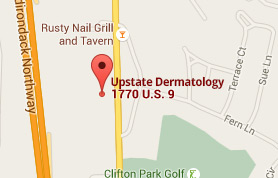Posted by Jody on Jul.01.18 in Skin Care
ONE PRACTICE DESCRIBES ITS EXPERIENCE WITH A STANDARDIZED IN-OFFICE APPROACH
WITH A. NEAL GREGORY, MD AND DEBRA BILLINGTON
Product dispensing had always been part of A. Neal Gregory, MD’s practice in upstate New York, but he sought a simplified approach. Then he learned about Skin Type Solutions (STS), which he says, “for me was not so much about the products as about the approach to skin care evaluation.” The STS approach “provides a rubric or frame work on how to consistently assess patients.” Dr. Gregory and Debra Billington, who serves as the Skin Type Specialist at Upstate Dermatology, discuss their experience with STS.
How would you describe Skin Type Solutions?
Dr. Gregory: It’s a good springboard for patient education on sunscreen, skin cancer prevention, good skin care. It provides a consistent framework for assessing patients and a visual way of organizing products in your office so that patients see.
They have display designers who help you fit the space that you have available. It makes an impact when patients get to see this display with the 16 different skin types by number and color.
I have a staff of mid-levels, so we use the skin typing to understand the composition of our patients’ skin and we certainly use the STS-established products. Contractually we cannot add to the Skin Type regimen—products are tested against the skin types to assure they are appropriate. But we use that framework to understand how other products that we already offered could be used by patients of various skin types.
Ms. Billington: There are 16 skin types. They’re broken down into different colors per skin type. There are different letters. Whether you’re oily or dry, sensitive or not, pigmented or not, wrinkle prone or not. So you can either remember your skin type by its color, its number, or its series of four letters.
How do patients benefit?
Ms. Billington: You would be amazed at the things that patients do to their skin, including overuse of exfoliants. Things they’re doing at home that are actually counterproductive to what the providers are trying to treat. Our patients are much more successful in treating the conditions and concerns they came in for, because they’re more educated about what they should be doing.
Whether they buy from us or not, at least when they go to the store and they look at so many things, they can say, “Okay, this is more appropriate.”
And I think both the physical outcomes the patient achieves and the understanding of why a certain product is or is not appropriate for their skin just makes them more compliant and more successful going forward.
What is the skin typing process like?
Ms. Billington: There’s an electronic questionnaire that has about 10 questions and they’re pretty simple. Can you use anything on your face? How often do you moisturize? Do you think you’re oily? Very oily? Etc.
Once you determine the skin type, you can review the regimen; all the products work cohesively with one another. The goal is to have the patient on as much of the regimen as possible to get the best results.
Patients have been receptive. There isn’t any type of pushy atmosphere. And honestly once patients are able to talk to us and realize that this is really an important informational tool, they’re just surprised and so glad that they took a minute to learn about it. I think it’s really changed the perception of some patients and how they view their skin.
How has implementing STS benefited your practice?
Dr. Gregory: We have seen an increase in sales. However, it’s important to note that we didn’t bring it on as a profit line. We brought it on as a tool and as a way for us all to consistently understand the skin care in our patients. So that we’re all looking at it with the same format. That’s really why it’s been valuable in our practice.
Our practice is primarily medical and surgical, and it’s equally as valuable for the patient with skin cancers as for a more cosmetic concern. For us it’s more of a medical tool than an aesthetic tool. We do have aesthetic patients who ask us strictly for the skin care but we can use the parameters of skin typing for all kinds of issues that people have with their skin, facial and non-facial.
Ms. Billington: The provider and I will skin type each patient and give them recommendations for cosmeceutical products they should use. We also help the patient understand where their topical prescriptions fit into the regimen. And if they have other concerns or they want to do other aesthetic type treatments, I’m able to direct them.
Our patients have been super-receptive. Plus they think it’s great that they have someone to talk one-on-one with that helps cement what the provider said and makes sure they understand what their regiments supposed to be.
And when they’re able to understand why they’re using a particular regimen, I’ve found that they’re more compliant with it.
MODERN AESTHETICS® | MAY/JUNE2018
About Modern Aesthetics:
Modern Aesthetics is the source for expert advice on patient care and practice development for cosmetic surgeons. With content by and for clinicians, each edition offers unique perspective and insight regarding the latest developments in aesthetics–from skin care to advanced procedures–and strategies for clinicians to successfully incorporate them into practice.








